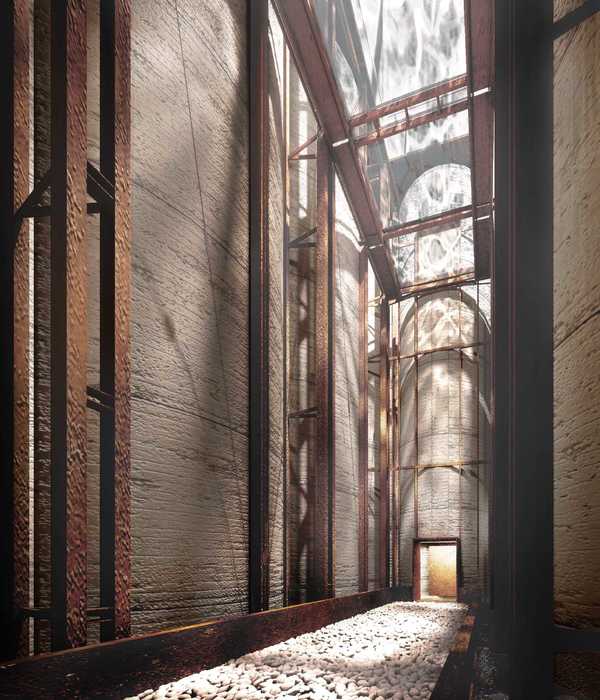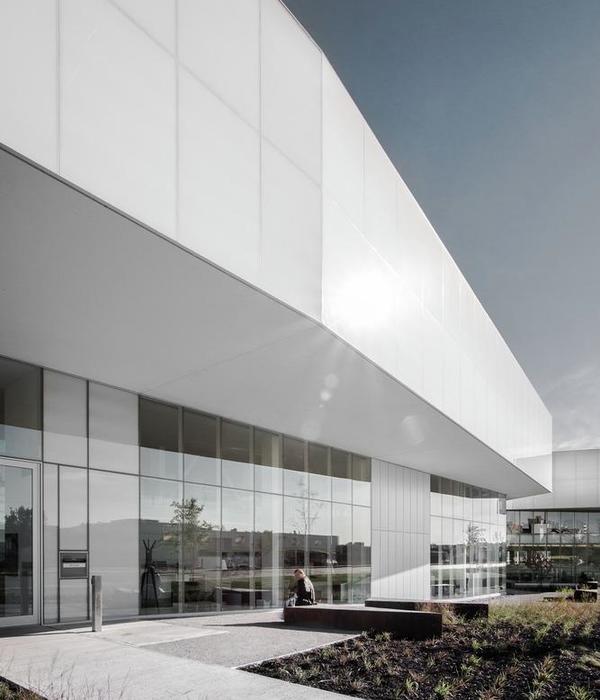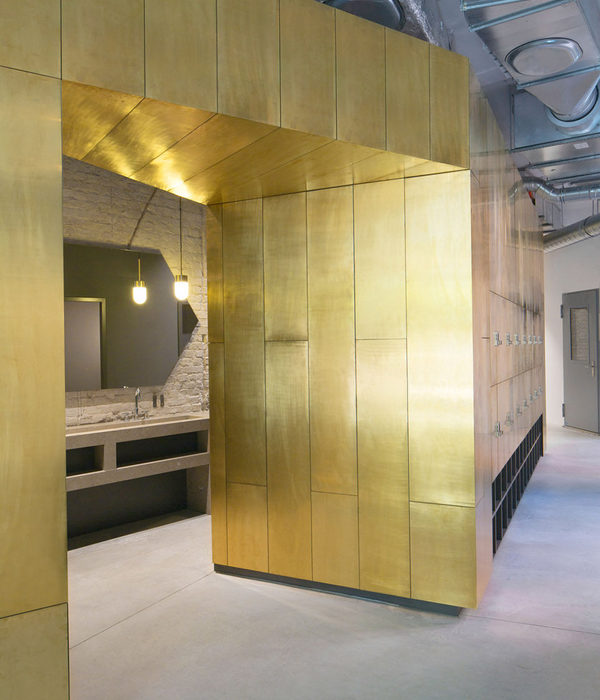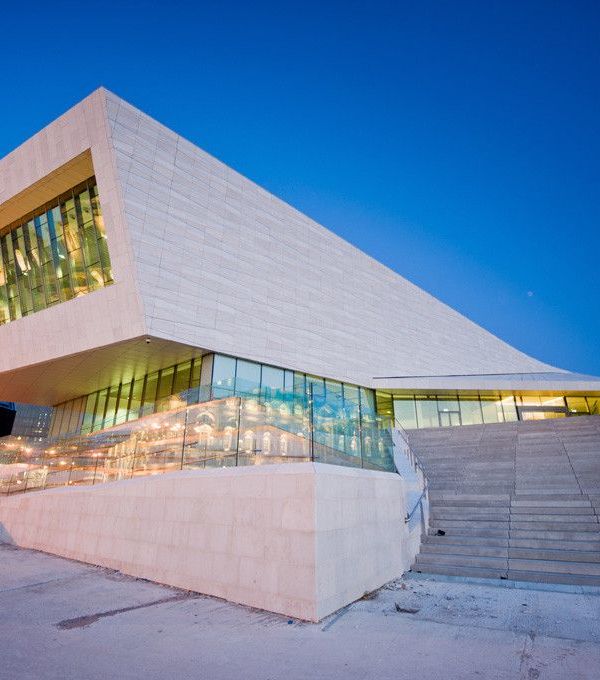Muzeum Susch, a major new space and home for experimental approaches to contemporary art, opened to the public on 2nd January 2019 in Susch, a remote town on the ancient pilgrim route to Santiago de Compostela in the Engadin valley of the Swiss Alps.
The museum comprises three buildings; the Bieraria (brewery) and Bieraria Veglia (old brewery) which, interconnected with the tunnel, will host the exhibition space, foundation headquarters, and a restaurant; and Chasa della Santa which will house guests of the museum and the foundation. The challenge has been to unite these structures visually as well as functionally.
To connect the economic building of the monastery complex (Bieraria Veglia) with the later added main building (Bieraria), an underground passageway will lead visitors underneath the street into the Bieraria opposite. One of the first encounters inside the museum is with the natural mountain rock grotto, historically used for the cooling and storage of beer, interacting with the building’s history in a playful dynamic between old and new. This space will eventually form a unique gallery for site-specific artist commissions.
Additional floor space almost tripled inside the brewery building which will comprise now of 1,500 square meters of exhibition space in total. The original central cooling tower of the brewery has been extended by four meters into the ground to a total of 17 meters in height.
As part of the project, the architects developed a proposal for the landscaping around the structures of the museum that seeks to restore and consolidate the historic property lines on site. The stone walls marking these lines are supplementing the architecture and the legibility of the monastic history, defining the exterior boundaries of the new museum complex. A special intervention by landscape architect Günther Vogt references the idea of a library built into stones. Since the framework of the ensemble is an important element in the perception and the historical understanding of the place, it is supplemented by additional, partly lower walls, where stones from the river with different colours, structures, and sizes, are sorted into the dark, natural stone wall like an encyclopedia of the natural history of the site and the region, like a Landscape Library. The concept combines both elements: a sanctuary for contemplation and the exposition of natural history.
{{item.text_origin}}












